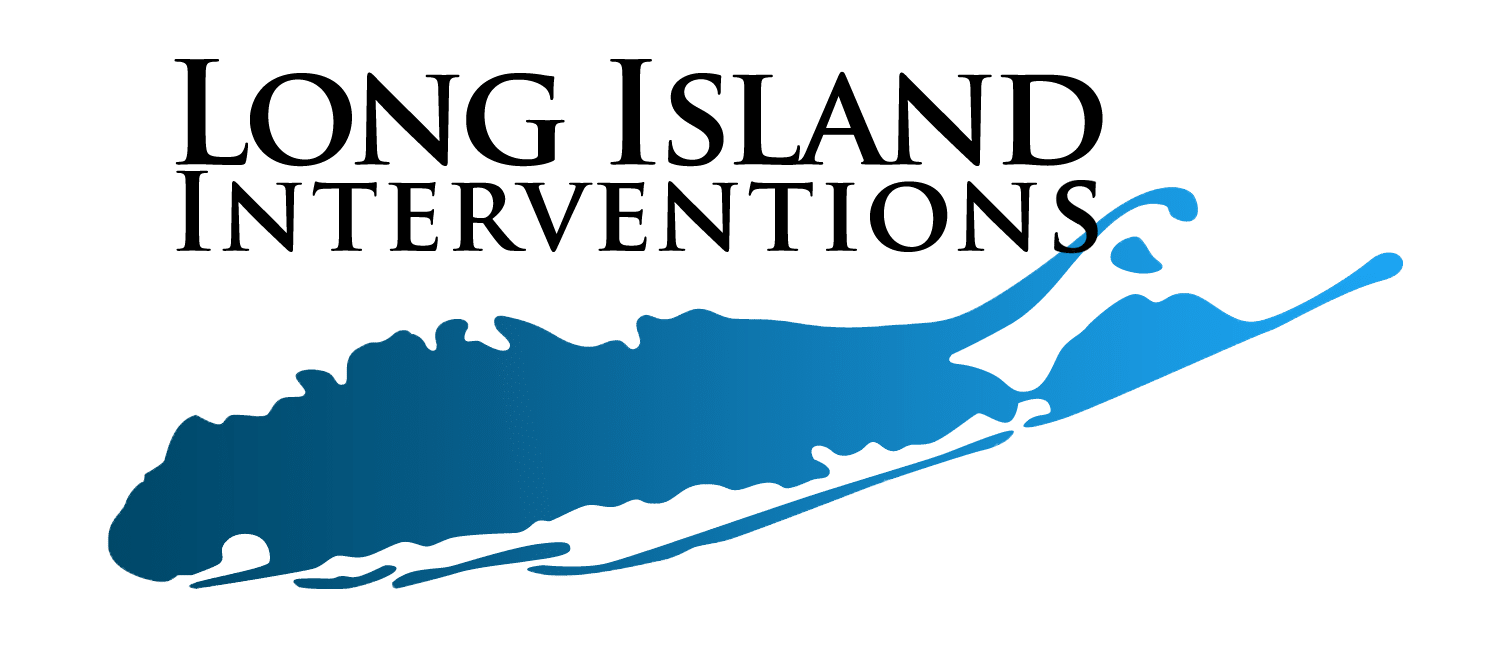Addiction comes in various forms, from the mild to the extremely severe. It’s usually related to drugs or alcohol, which is referred to as substance use disorder. There’s also behavioral addiction like gambling, overeating, and internet compulsion.

The good news is that with the right programs and resources, addiction can be treated. And, as with any type of treatment, the first step to getting better is to acknowledge the problem.
So, if you’re hoping to organize an intervention or encourage someone you care about to get the help they need, then this article is for you.
Medical professionals at Long Island Interventions are qualified in finding optimal ways to convince your loved one to seek help. Then, once the individual is ready to accept help, they’ll find a whole team of experts ready and willing to walk them through the process step by step.
In this article, we shed light on addiction and the impact it has on individuals and their families. Then, we’ll talk about how this treatment facility can help you and your loved ones.
Let’s get started.
Table of Contents
Understanding Addiction
In the world of medicine, addiction is known as a chronic disease or dysfunction. Whether it’s a substance abuse disorder or behavioral addiction, it works by stimulating the reward, memory, and motivation centers in the brain.
Medical professionals say addiction has four factors that differentiate it from other neurological disorders. Even though there are different types of addiction, all addicts behave in the same way. That’s why these factors apply to all kinds of addiction like drugs, alcohol, gambling, caffeine, sex, and video games, as well as every other type of obsession out there.
These factors are often called the four Cs.
Compulsion
Most habits are born out of an impulse, a dare, or just to try new things. However, as the dependence on the substance grows, it quickly turns into a part of life that becomes overpowering.
Thus, compulsion refers to the overpowering urge to fuel the addiction. Then, if the person tries to stop, they suffer from agonizing anxiety, which negatively impacts every other aspect of their life.
Craving
The powerful desire to fuel the addiction manifests itself as a physical need. It’s painful and, oftentimes, debilitating with symptoms like lack of appetite, restlessness, and insomnia.
It makes the individual feel like it’s paramount for their basic survival just like air, food, and water.
Consequences
Individuals know quite early on that their addiction brings about negative consequences. However, even when it becomes apparent how harmful they are, they still choose to continue their behavior.
Some common repercussions of addiction include work, legal, relationship, and money problems.
Control
The final C isn’t about having control, but rather the loss of it. When an individual reaches this stage, they can no longer manage how or when they fuel their addiction.
All they care about is getting that high so they can feel good. That urge often becomes so powerful that the individual has no control over taking, using, or doing something that could harm them.
The Devastating Effects of Addiction in New York
Unfortunately, New York is dealing with a crippling disease called addiction.
According to recent statistics, someone dies of a drug overdose in New York City every three hours, which comes to over 3,000 deaths per year.
Statewide, it’s estimated that nearly 2 million people in New York suffer from a substance abuse problem.
The two most commonly used drugs are fentanyl, cocaine, heroin, and methadone. They make the supply of drugs difficult to predict or trace, which, in turn, increases the risk of overdose and the abuse of other harmful substances.
Then, there’s of course the opioid problem, which has run rampant across the entire nation. In New York, the number of opioid-related deaths went up from 69% in 2010 to nearly 90% by 2021.
Even more harrowing is the rise of a new drug called Xylazine in recent years. It’s a well-known sedative, muscle relaxant, anesthetic, and analgesic approved for use on animals, but it’s not FDA-approved.
Yet, somehow, it’s found its way into drug mixtures used by humans. It’s become known as “tranq dope” or “zombie drug” and is causing substantial concern among law enforcement members.
Another dangerous aspect of this adulterant is that it’s resistant to Narcan. This means that Xylazine is capable of doing greater harm than previously known drugs.
Introduction to Long Island Interventions
Now that we’ve talked a bit about addiction and its negative consequences, it’s time to talk about possible therapy methods. As more and more people seek treatment, the number of successful facilities is also increasing, including one on the east coast that comes highly recommended, Long Island Interventions.
At Long Island Interventions, the main goal is to provide individuals and their families with the ability to fully recover. No matter what stage of addiction the person may be in, the center’s experienced interventionists provide the necessary data and resources needed to recuperate and integrate back into society.
The treatment facility is situated in the scenic suburban town of Westbury in New York, about 18 miles east of Manhattan.
Its main goal is to provide clients with the proper treatment required for a safe and successful recovery from drug and alcohol addiction. To do this, medical professionals work to help individuals overcome their dependence on addictive substances so they can eventually lead a life that is free of any drugs or alcohol.
Approach to Addiction Treatment at Long Island Interventions
The main principle underlying the treatment approach at Long Island Interventions is to help individuals understand the reasons for their habits. Starting with the intervention and during the treatment process, clients are encouraged to express their thoughts and emotions in a safe space.
Through this process, they come to understand how their addiction impacts their families and loved ones. This is done without blame or accusations.
While addiction symptoms may be similar, they affect each person differently. That’s why medical experts at Long Island Interventions start by assessing the individual. Then, a multidisciplinary team creates a personalized plan that caters to the unique needs and demands of each person.
Having access to multidisciplinary care provides patients with multiple perspectives, better access to a larger database, and a wider support system. It also benefits health professionals because they enjoy better job satisfaction and a more efficient use of resources.
Addiction Treatment Services at Long Island Interventions
Generally, treatment programs at Long Island Interventions last between 30 and 90 days depending on the severity of the case. During this time, clients are always accompanied by a team of professionals ranging from therapists, counselors, nurses, and physicians. The treatment center offers a variety of treatment options, including substance abuse treatment and addiction recovery programs.
They’re there to provide the proper resources, tools, and treatments to reach full recovery and maintain it long after leaving the facility. This includes support for co-occurring disorders and dual diagnosis cases, where clients may have both substance use and mental health disorders.
When given the help and support they need, each person has the power to regain control over their life. That’s why every addict receives a customized recovery plan tailored to their unique personality and circumstances. These treatment plans are designed to address various levels of care required for effective recovery.
This plan includes a comprehensive program that may include medical detox combined with inpatient or outpatient rehab, depending on each client’s individual needs. Long Island Interventions works closely with the Office of Addiction Services and Supports (OASAS) to ensure the highest standards of care.
Listed below are the treatment programs offered by Long Island Interventions.
Intervention
Given the proper tools, everyone can beat addiction and make a full recovery. However, sometimes the person who needs help the most doesn’t want to admit that there’s something wrong. No matter how many times friends and loved ones talk to them one-on-one, they’re oblivious to the fact that they’re struggling with an addiction problem.
This is when it’s time to call an intervention.
An intervention is a gathering orchestrated by one or several of the individual’s closest friends and family. The point is to get the person to seek professional help with substance abuse or addictive behavior.
The problem is that interventions can sometimes be difficult to execute. They also carry certain risks. Having a professional interventionist organize, plan, and handle the gathering can help lower these risks. These experts are qualified to plan the gathering based on an individualized outline based on the needs and wants of the individual. Interventionists are also authorized to carry out the intervention to make sure it’s persuasive enough to help the individual start their journey to recovery.
Medical Detoxification
Medical detox involves eliminating the substances—and the impact they have—from the client’s body. Using medically prescribed pharmaceuticals, the individual is slowly weaned off their addiction without having to deal with the buildup of toxins, which often results in undesirable withdrawal symptoms. Medication-assisted treatment is often used during this phase to ensure safety and comfort.
Because each type of addictive substance impacts the body differently, the detox process must be administered accordingly. For example, detox from heroin is different from that of alcohol. Through this treatment program, residents of Long Island Interventions can experience minimal discomfort while overcoming their reliance on the substance of choice once and for all.
Residential Treatment Program
Residential treatment programs, also known as inpatient rehab, have a high success rate for long-term sobriety and abstinence from substance abuse. During this treatment process, the individual stays at the facility from 28 to 90 days, sometimes even longer. They’re provided with round-the-clock support and care while treated using a multidimensional approach to ensure maximum relief with minimal discomfort. To ensure the treatment is effective, the medical expert team creates a personalized program to fit each client’s needs.
The first step of inpatient treatment is medical detox. It also includes both individual and group therapies, as well as family therapy. Residential programs provide a structured environment conducive to recovery and wellness.
Intensive Outpatient Program
Long-term recovery and sobriety require intensive, ongoing treatment as well as a strong support system. Both can be found at Long Island Interventions’ outpatient program. Clients are provided with the continued care and support they need to fully recover.
The intensive outpatient program (IOP) at Long Island Interventions doesn’t require detoxification, remaining in the facility 24/7, or round-the-clock supervision. Instead, individuals attend sessions or meetings several times a week. Then, they can go home afterward. The treatment facility offers both day and night programs for added convenience. This allows clients to go about their normal routines like keeping up with their school, jobs, and family commitments.
The primary components of outpatient treatment include:
- Individual counseling
- Group therapy
- Family therapy
- Aftercare support
- Relapse prevention
- Medication management
- Random alcohol and drug screenings
Evidence-Based Therapeutic Approaches
Evidence-based therapies refer to a specific psychological approach designed specifically for each client. They provide individuals with tools to help them manage cravings, withdrawal symptoms, and triggers. These types of therapies are often administered hand-in-hand with holistic and natural-focused healing methods.
Holistic refers to the healing of all aspects of your health. It often comprises various therapies like yoga, meditation, massage, and acupuncture. Combined, these methods make it more accessible for recovering addicts to improve their thought patterns and behavior, thus achieving long-term sobriety.
The four main types of evidence-based therapy include:
Cognitive Behavioral Therapy
Cognitive behavioral therapy (CBT) is used to treat individuals who suffer from substance abuse and depression simultaneously. This is a common symptom of addiction, which is why treating both disorders at the same time has proven to be the most effective technique.
Dialectical Behavioral Therapy
Dialectical behavioral therapy (DBT) has one fundamental goal: to help clients find value in their lives. It also works to promote positive change and acceptance to facilitate the treatment process and ensure its effectiveness.
DBT incorporates four skills:
- Mindfulness
- Emotional regulation
- Interpersonal effectiveness
- Distress tolerance
Group Therapy
Usually set up with up to 12 members, group therapy promotes support and empathy while encouraging clients to express their thoughts and emotions. It fosters the idea of sharing different outlooks and opinions. Participants can share their experiences and evaluate various coping mechanisms. This allows them to build a sense of community based on compassion and understanding.
Family Therapy
Addiction has a direct impact on personal relationships and family dynamics. That’s why almost all treatment programs include family therapies. Through a collaborative, non-blaming setting, families are encouraged to understand and express empathy. They come to learn of any potential causes of the addiction and possible triggers that the recovering addict has to deal with on a daily basis. It also focuses on providing the individual with insight into the level of damage their addiction has caused while acknowledging the importance of these relationships in their lives.
Conclusion
Addiction treatment and recovery are always possible, especially when combined with empathy, care, and proper support and guidance. Long Island Interventions offers all that and more. Remember, it’s never too late to seek treatment for yourself or someone you care about. Whether you’re looking for an alcohol rehab or a drug rehab center, they have the resources to help.
With support from organizations like SAMHSA and OASAS, and through programs like sober living and telehealth services, Long Island Interventions is dedicated to providing comprehensive care for all New Yorkers, including adolescents, young adults, and adults in Brooklyn, Albany, and NYC. They accept various health insurance options, including Medicaid, Medicare, private insurance, and work with numerous insurance providers to ensure accessibility to their addiction treatment center.
Call us today for round-the-clock assistance. You can also live chat with a licensed counselor 24/7, email, or text.
References:
- https://www.ncbi.nlm.nih.gov/pmc/articles/PMC3354400/
- https://adai.uw.edu/wordpress/wp-content/uploads/Methadone-2022.pdf
- https://www.nytimes.com/2023/01/07/health/fentanyl-xylazine-drug.html
- https://www.sciencedirect.com/topics/chemistry/adulterant
- https://www.facebook.com/longislandinterventions/
- https://www.verywellmind.com/would-an-intervention-help-my-addicted-loved-one-4147406
- https://www.americasrehabcampuses.com/addiction/withdrawal/do-withdrawal-symptoms-come-and-go/
- https://longislandinterventions.com/programs/outpatient/
- https://longislandinterventions.com/therapy/holistic/
- https://longislandinterventions.com/therapy/holistic/
- https://longislandinterventions.com/contact-us/
Further reading resources for understanding addiction and recovery:
- https://www.mayoclinic.org/diseases-conditions/mental-illness/in-depth/intervention/art-20047451
- https://www.mayoclinic.org/diseases-conditions/drug-addiction/diagnosis-treatment/drc-20365113
- https://my.clevelandclinic.org/health/diseases/16652-drug-addiction-substance-use-disorder-sud
- https://www.apa.org/ptsd-guideline/patients-and-families/cognitive-behavioral
- https://www.camh.ca/en/health-info/mental-illness-and-addiction-index/dialectical-behaviour-therapy
- https://longislandinterventions.com/sober-companions/

